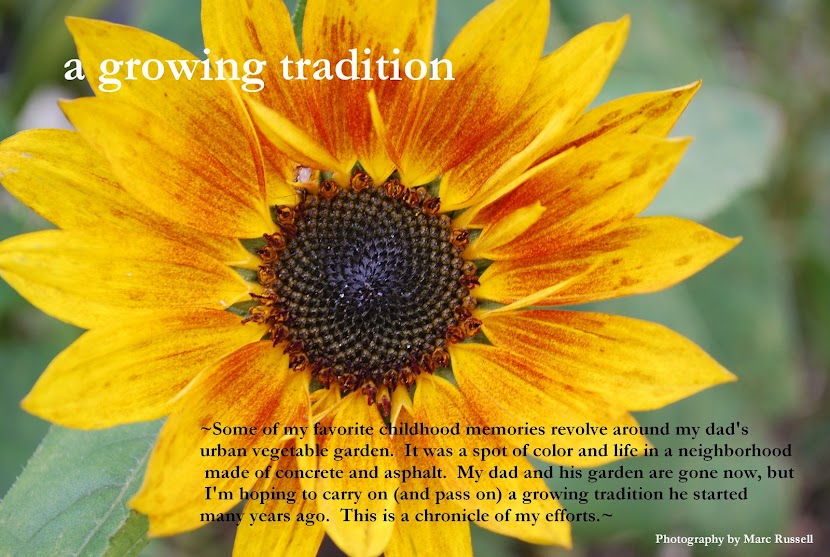This weekend I finally got around to building my hoop house. I've wanted one for a long time now and had gone over the design in my head during the past three months. After many mental revisions and plenty of second guessing, I realized last week that time was running out and that I just had to wing it.
My goal was to erect a structure that would house six of my 3 x 6 ft raised beds. I wanted something that could be dismantled easily if needed and yet be sturdy enough to withstand our New England winters. Also I didn't want to spend an arm and a leg on the materials either.
Anyway, here is how it all came together:
I started off by driving stakes made from 1/2 in PVC pipe into the ground spaced about 3 feet apart. (Marc is in the background loading firewood.)
I installed the seven arches that will serve as the backbone of the hoop house by bending 15 ft lengths of 1 inch PVC piping and slipping the hollow ends onto the stakes. (PVC piping generally comes in 10 ft lengths but can be joined together easily using plastic couplings to create the desired length.)
To help prevent the arches from buckling under the weight of snow, I drove 5 ft tall metal poles (8 total) into the ground and positioned each pair underneath every other arch.
Metal wire was then used to attach the arches to the poles.
I then used string to mark the center-ridge line as well as two additional side lines that will provide additional stability to the structure.
I attached the three lines (3/4 inch PVC pipe) to the arches using metal screws. The lines help to keep the arches perfectly straight under the weight of snow.
I also attached 3/4 in PVC piping to the base and down length of the structure.
Once the hoop house frame was finished, the next order of business was to attach the plastic sheeting to it. I needed to cover an area that measured approximately 15 ft (the length of the arches) by 19 ft (the length of my beds). After deciding against purchasing professional greenhouse plastic, I went the practical route and bought two rolls of the 10 x 25 ft 3.5 mil polyethylene sheeting available at most hardware stores. (I opted for the 10 ft width because the difference in pricing between it and the 20 ft width was HUGE!)
We attached the plastic sheeting to frame one roll at the time using heavy metal clips (the jumbo-sized ones found at most office supplies stores) and allowed for a 5 ft overlap at the top. The first roll went over the center-ridge line and was attached to the far side line. Then the second roll was draped over the first one at the top and attached to the side line on the opposite side.
Metal clips were also used to attach the poly sheeting to the base of the hoop house.
Next I focused on constructing the end-wells. The wooden frame pictured here was built using 1 x 3 inch lumber and is just wide enough to fit over the metal poles.
The wooden frame was attached to the poles using screws and metal wire. (I was pleasantly surprised by how sturdy it felt.)
I then wrapped the poly sheeting over the frame, stapled it to the inside and trimmed the excess. The end result looked reasonably neat and clean.
I have yet to construct the hoop house doors but they will fit over and be hinged to the wooden frames.
All in all, I was very pleased with my (almost) finished hoop house. It feels really sturdy and best of all, the materials (not including the metal poles, which I had lying around) cost me a modest 120 dollars. I am really excited to see how my winter veggies will fair this year and will consider growing heat-loving summer veggies inside of it as well.
